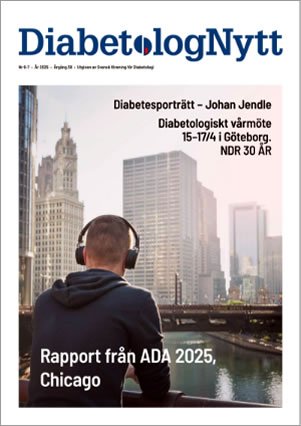WHO: Alcohol Cancer Warning Labels Should Be Mandatory
Prominent, mandatory health warning labels on alcohol products should be implemented across Europe to raise awareness on the link between drinking and cancer, a new report by the World Health Organization (WHO) has said.
The report, published on Friday, revealed that alcohol consumption in the European Union (EU) per capita in 2019 was twice the world average, making it home to the heaviest drinkers in the world. Alcohol causes an estimated 800,000 deaths every year in the region. In 2020, almost 112,000 new cancers were directly attributed to alcohol, and there were more than 50,000 alcohol-attributable cancer deaths in the EU, with colorectal and breast cancer representing the largest proportion of new cancer cases, the report further revealed.
Although the link between alcohol and cancer has long been established, the EU faces a major information gap. A study featured in the report that surveyed people in 14 European countries found that only 15% of respondents knew that alcohol causes breast cancer, and 39% knew of its link to colon cancer.
“Alcohol is highly normalized compared to other substances like tobacco, for which the risks are more established. The alcohol industry has contributed to misperceptions through marketing and overt efforts to minimize and undermine information on the risks of alcohol, which has echoes of tobacco industry effort,” David Hammond, PhD, professor of public health at the University of Waterloo, Waterloo, Ontario, Canada, who is a member of WHO Europe’s technical advisory group on alcohol labeling (TAG-AL), told Medscape Medical News.
Can Labeling Make a Difference?
Alcohol labeling is now being recognized as a potentially impactful tool to bring about change.
In 2026, Ireland will become the first country in the world to legally mandate cancer warnings on alcohol containers, along with a warning on liver disease, a pregnancy symbol, and information on grams of alcohol contained and its energy value. France, Germany, and Lithuania are the only other countries in the EU that legislate health warnings on alcohol, but these are focused on pregnancy and drinking age.
Nikhil Gokani, PhD, a lecturer in consumer protection and public health law at the University of Essex, Colchester, England, and also a member of WHO’s TAG-AL, said Ireland had set an example of what a country can achieve with ample political will.
“The reasons that other European member states are not moving forward are not legal but rather a lack of ambition,” he said. “EU law permits member states to implement national alcohol health warning labeling, providing it is accurate and non-misleading.”
The WHO said that countries across the region should mandate health warning labels on alcohol products as part of broader alcohol interventions to raise awareness on the cancer-alcohol link, decrease product appeal, and increase support for other policies to facilitate a “much-needed shift in Europe’s narrative on alcohol.”
Daša Kokole, PhD, and Daniela Correia, PhD, authors of the report from the WHO Regional Office for Europe, told Medscape Medical Newsthat there has been increased awareness that the effectiveness of labels will depend on their content and format, and that any attempts to mandate the labels will have to include their specifications, such as size and color.
“Mandatory labeling on the health risks associated with alcohol in the context of a broader suite of alcohol policies would signal a message from governments and public health officials that alcohol should not be treated as an ordinary commodity — an important step in starting to expose the public to a range of clear and uniform messaging,” the WHO report said.
But not all agree with the WHO’s stance.
Karl Erik Lund, PhD, senior researcher at the Norwegian Institute of Public Health, Oslo, Norway, and a former research director at the Norwegian Institute for Alcohol and Drug Research, told Medscape Medical News that the alcohol area faces a dilemma in designing health warnings and defining the target group.
“In order for health warnings on alcohol packaging to be perceived with credibility, they must, unlike cigarettes, ideally be designed to apply to the group that uses alcohol atypically — abusers,” he said. “In the opposite case, if the health warnings on alcohol are designed to apply to all consumption, the message may easily lose credibility because it is simply not true. Some might disagree with me here.”
Some do. The WHO published a statement in The Lancet Public Health in 2023 saying that “evidence does not indicate the existence of a particular threshold at which the carcinogenic effects of alcohol start to manifest in the human body,” and “as such, no safe amount of alcohol consumption for cancers and health can be established.”
An Informed Public
Nicola Merrin, policy and research manager of Alcohol Focus Scotland, Glasgow, Scotland, a national charity working to reduce alcohol harm, said Scotland had long been considering a mandatory approach to labels, an approach the organization was advocating for.
“The issue of labels has been coming up for 20 years in terms of the government saying, ‘we want to do something’ and the industry responding with promises to provide information on a voluntary basis, and there’s a general preference for a four-nations approach across the UK,” she said.
“Labeling is so important because it facilitates easy access to information and advice, and it can improve public knowledge about the risks of drinking. [T]hat’s really needed because, while most people are concerned about developing cancer, only 1 in 2 people in Scotland knows alcohol causes cancer. At the end of the day, everyone has a right to decide what’s right for them, but the government has a responsibility to ensure they can make those decisions in an informed way.”
The people interviewed did not report any relevant financial relationships.
From www.medscape.com
Nyhetsinfo
www red DiabetologNytt

